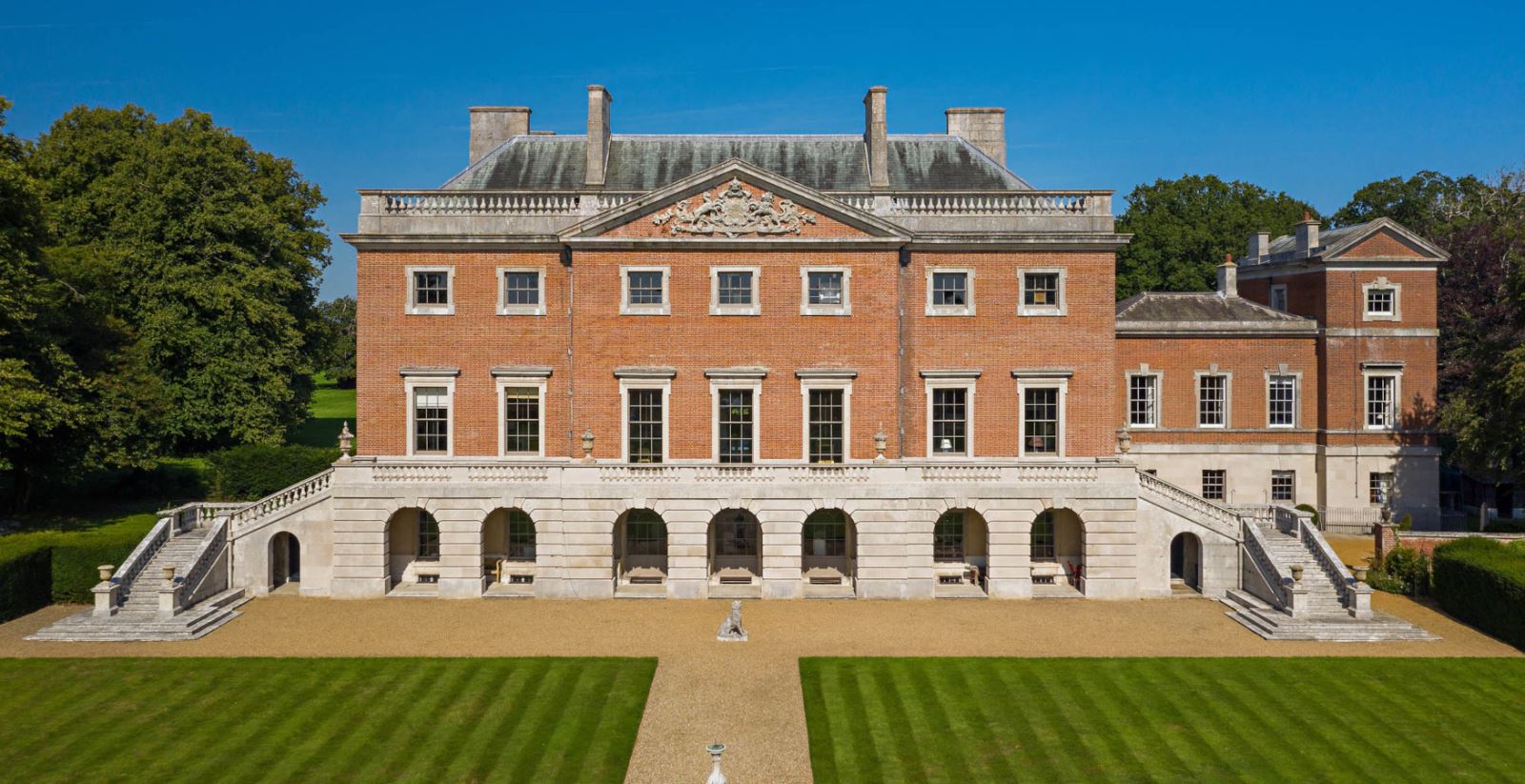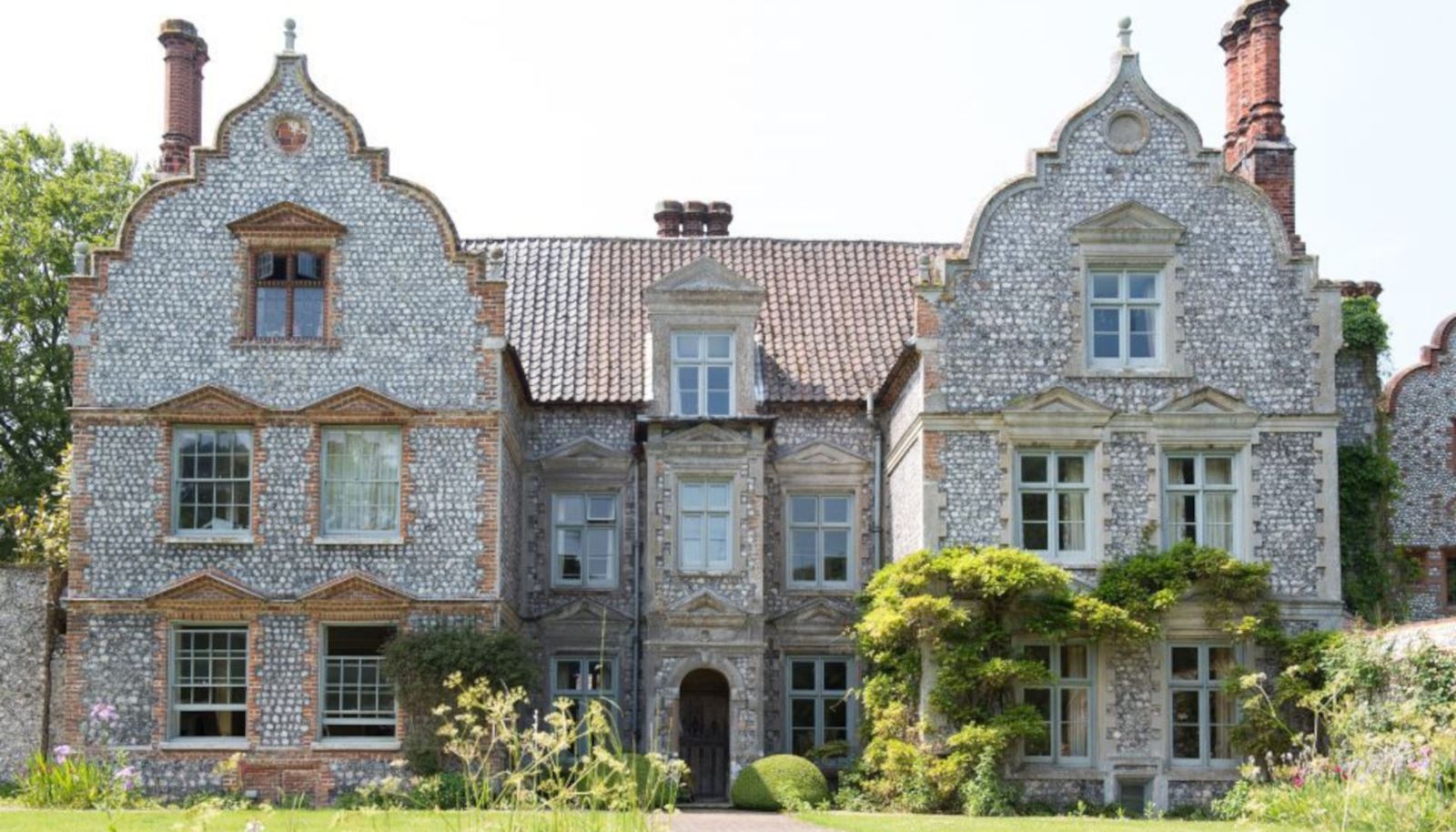North Norfolk is steeped in history and heritage. With a past of prosperous landowners and rich proceeds from trade with the continent in goods like wool, many fine buildings including stately homes and halls were built in this era, and can still be explored today. Read on to find out more about our very own ‘Downton Abbeys’. (Please check opening dates and times before you visit).
Holkham Hall is an impressive example of English Palladian style built in local yellow brick. The hall is set within a unique location, surrounded by 3,000 acres of rolling parkland rich in wildlife and near to the coast with its famous beach. Inside the house, there is an impressive entrance hall, with coffered, gilded ceiling and English alabaster panelling; thought to be one of the finest classical rooms in England, influenced by ancient Roman buildings. You can explore the estate by bike and boat hire, as well as marvel at the 18th century walled gardens, the Grand Tour statuary and art collection and Victorian kitchen. There is also a woodland adventure play area, nature trail and herd of fallow deer roaming the grounds.
.jpg)
Houghton Hall & Gardens. With its domed corner towers, Houghton Hall is another fine Palladian-style house, built in the 1720s for Robert Walpole, Britain’s first Prime Minister. Its sumptuous State Rooms including the Stone Hall, Marble Parlour and Cabinet Room are home to impressive pictures and fine furniture. There is also the Marquess of Cholmondeley's lifetime collection of 20,000 model soldiers and militaria forming the Soldier Museum. This is the largest private collection of model soldiers in the world showing many reconstructions of battles, as well as displaying a selection of paintings and militaria. The Hall is surrounded by parkland, home to a herd of white fallow and exotic deer, a restored walled garden and an impressive collection of contemporary sculptures by world renowned artists.
.JPG)
National Trust’s Blickling Hall. The grand entrance to the Blickling Estate, birthplace of Anne Boleyn, is set at the end of rows of yew tree hedges. The red-brick mansion, sits in the heart of a magnificent garden and historic park in the beautiful Bure meadows. This landscape with its hedges and tree-lined lanes has changed little over the centuries. Visitors can explore the house, with its nationally important book collection, see the kitchen and hear the real voices of the servants. Explore the grounds on bike or foot by way-marked walks with stunning views and wildlife.
.jpg)
National Trust’s Felbrigg Hall. The 1,760 acre Felbrigg Estate, originally owned by the Felbrigg Family, was home to the Wyndham family before it was passed onto the National Trust. Felbrigg Hall, is an elegant 17th century country house with a blend of opulence and homeliness. Each room surprises and delights, from the great hall and its stained glass windows, to the nodding mandarins in the Chinese bedroom. You can see Queen Mary's teapot in the dining room and the magnificent row of copper pans in the kitchen. To keep children entertained, there are story boxes around the house, explaining some of the history. Outside, you will find an impressive walled garden which provides flowers for the hall, and allotments which provide fruit and vegetables for the community. The lake, set in a rolling landscape, over 500 acres of woods and walking trails is a great place to explore nature and wildlife on this north Norfolk estate.
.jpg)
Sandringham, the Royal Family's private country house, is the jewel in the crown. All the main ground floor rooms used by the Royal family are open to the public. Each year in the Ballroom, there is a different exhibition on display. In the museum, there are family possessions and vehicles displayed, including a 1900 Daimler and a half-scale Aston Martin used by Princes William and Harry. The vast estate includes 60 acres of informal gardens, 600 acres of country park and the St Mary Magdalene Church, where the Royals visit at Christmas.
.jpg)
Hindringham Hall. This Tudor flint house is surrounded by a 13th century moat, and sits at the bottom of a river valley. It originally housed a community working for the Prior of Norwich and a number of medieval wooden buildings. The 15th century south-east wing (Henry VII) and Elizabethan (16th century) building, is virtually unchanged from the 16th century. The owners give a tour of the ground floor of the Hall revealing the fascinating story of the people who lived in the Hall and its grounds.
.jpg)
The beautiful Hoveton Hall Estate covers 620 acres of parkland, gardens, woodland, arable and grazing land. The Regency Hoveton Hall on the edge of the Norfolk Broads, was built between in the early 1800s and has been owned by the Buxton family since 1946. Hoveton Hall Gardens is a stunning 15 acre garden open between April and September. There are several gardens to explore including the Spider Garden, the Arboretum, Old Kitchen Garden, Magnolia Garden and Lake and a woodland walk.
.jpg)
Wolterton Hall is an 18th century house on the Wolterton Estate built by the diplomat brother of Sir Robert Walpole. It has a fascinating history and with collections to discover set amongst spectacular landscape views. The hall, designed by Thomas Ripley and inspired by classical architect Andrea Palladio, stands in great position facing south overlooking the park. Designed by Charles Bridgeman in the 18th century, the park with its 10 acre lake is set in 500 acres of fields and woodland.

Mannington Hall is known for its impressive gardens and roses are a theme throughout, especially with the walled Heritage Rose Garden and Modern Rose Garden. A perfect setting for country walks with trails open all year round, visitors can admire wildflowers, the lake and trees. The Hall is open by appointment only or for special events.
.jpg)
Wiveton Hall, made famous by a BBC2 series, is situated on the north Norfolk coast between Blakeney and Cley-next-the-Sea. The flint-faced, Dutch-gabled, Jacobean manor house was built in the 17th century and the grounds are also home to a café, pick-your-own fruit farm, shop, art exhibitions and beautiful gardens.


